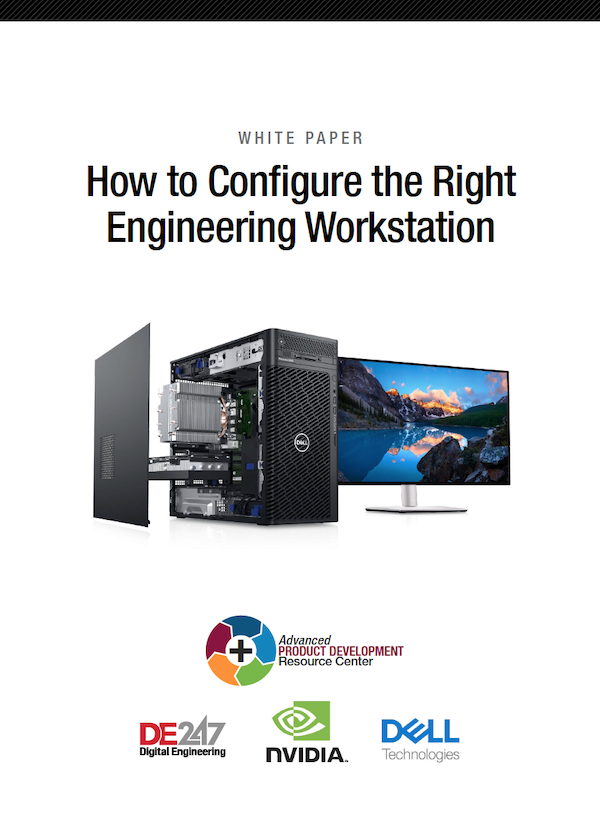How to Configure the Right Engineering Workstation
Learn how key workstation components can impact engineering productivity, and what factors to consider when configuring a new engineering workstation.

September 15, 2023
Product design has grown more complex and demanding. In the past, CAD, simulation, rendering, visualization and other tasks operated in distinct operational silos with their own workflows, but those lines are blurring.
As a result, design engineers are tasked with doing more than just CAD work. Increasingly, they are performing advanced simulation and analysis, as well as visualization and rendering as part of their day-to-day development workflows.
In this white paper, we will explain how key components affect engineering productivity and offer high-level guidance on configuring a professional engineering workstation based on typical workflows.
Download today
Latest News
Indy Autonomous Challenge to Returns to Indianapolis Speedway
Race set to feature a head-to-head race of possibly the fastest autonomous racecars piloted by artificial intelligence driver software, organizers...

Desktop Metal Releases Binder Jet 3D Printing Upgrade
The Production System P-1 metal binder jet 3D printer will be offered with a Reactive Safety Kit for high-speed production...
MathWorks Advances Software-Defined Workflows with NVIDIA’s Help
Developers can use their existing MATLAB Algorithm Codebase to develop and deploy AI-enabled applications via the NVIDIA Holoscan platform.

AI in Design: In Need of New Hardware
New hardware options are emerging to support artificial intelligence use cases.
Can AI Eat Itself?
Looks like synthetic training data is here to stay—it's something engineering organizations should keep a close eye on.
Sustainable Packaging Requires an Innovative Data-Driven Ecosystem
Sustainable packaging is a complex challenge that cuts across several evolving manufacturing developments.
All posts
Related Topics
New & Noteworthy

New & Noteworthy: Safe, Cost-Effective Metal 3D Printing - Anywhere
Desktop Metal’s Studio System offers turnkey metal printing for prototypes and...

New & Noteworthy: Direct Neutronics Analysis on CAD
Coreform Cubit 2023.11 workflows enable neutronics directly on CAD for next-generation nuclear energy...

New & Noteworthy: Agile Engineering Collaboration
Authentise Threads is a new software tool for distributed communications and project...

New & Noteworthy Product Introduction: Enterprise VR Headset
Lenovo ThinkReality VRX has an immersive display works with virtual, augmented and...
